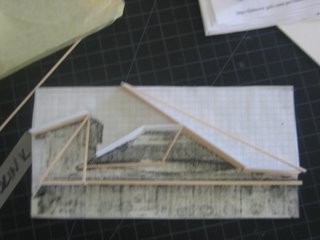 Here are my conceptual models. Taking characteristics from the regeneration of forest ecosystems after a natural forest fire, constraints are created to generate the dynamic system in a more pragmatic way.
Here are my conceptual models. Taking characteristics from the regeneration of forest ecosystems after a natural forest fire, constraints are created to generate the dynamic system in a more pragmatic way.Biodiversity & Symbiosis[diverse flora and fauna exist within the ecosystem. this diversity, usually competing, must exhibit traits of symbiosis as the ecosystem, the biome within all these creatures exist, is rebuilding itself.]--diverse, and competing cultural, political, and economical parts of new orleans must assist each other in the over-all rebuilding of the city--in the model each material exhibits different characteristics and properties, but work together to create a form.

 Dormant Qualities Activated[plants and species of wildlife previously dormant or shut out of the ecosystem are allowed to prosper]--through the mass destruction of portions of the city, a new approach to urban planning, housing, and other design are allowed to be considered in real opportunities--this model shows how the dormant quality of curvature and sectional variation is allowed within a normally flat board.
Dormant Qualities Activated[plants and species of wildlife previously dormant or shut out of the ecosystem are allowed to prosper]--through the mass destruction of portions of the city, a new approach to urban planning, housing, and other design are allowed to be considered in real opportunities--this model shows how the dormant quality of curvature and sectional variation is allowed within a normally flat board. Seeding[distribution of growth both randomly and desicively]--city decisions upon rebuilding efforts, random progression of people coming back into the treme neighborhood, random business generation based upon population of surroundings--this model mimics the purposeful seeding through rows but also acknowledges the random scattering of input into the system.
Seeding[distribution of growth both randomly and desicively]--city decisions upon rebuilding efforts, random progression of people coming back into the treme neighborhood, random business generation based upon population of surroundings--this model mimics the purposeful seeding through rows but also acknowledges the random scattering of input into the system. Biological Legacies[structures left after a change or disturbance. these shelter the new growth and house the remaining animal population, directly assist in the regeneration of an ecosystem]--New Orleans infrastructure, first response rebuilding efforts, economic instigtors, cultural instigators--the placement of the basswood allows the white plastic peices to trace the remaining lines of the ghosted image underneath it.
Biological Legacies[structures left after a change or disturbance. these shelter the new growth and house the remaining animal population, directly assist in the regeneration of an ecosystem]--New Orleans infrastructure, first response rebuilding efforts, economic instigtors, cultural instigators--the placement of the basswood allows the white plastic peices to trace the remaining lines of the ghosted image underneath it. Adaptation[the ecosystem must adapt to the alteration or disturbance and the new conditions that it produces]--regeneration of the city must rely on the shifts of population, business, and other factors--this model shows how the longitudnal lines are being forced to conform, move around, or grow over the disturbances in the field.
Adaptation[the ecosystem must adapt to the alteration or disturbance and the new conditions that it produces]--regeneration of the city must rely on the shifts of population, business, and other factors--this model shows how the longitudnal lines are being forced to conform, move around, or grow over the disturbances in the field.
Variable regeneration speeds/levels[growth cycles can vary widely between different plants, animals and insects, and various species of animal re-enter the ecosystem at different points during the regeneration process]--certain areas rebuild faster than others depending upon amount of damage, economic issues, and distance of the evacuated population--this model represents a three dimensional graphing of all of the various peices involved in the regeneration of an ecosystem.

1 Comments:
ERIN~
i'm having flashbacks haha.
can i offer a few suggestions?
01_you're using rigid materials to model fluctuations- try certain things such as elastics, fabrics, etc.. something that allows you the variation/push/pull you will need.
02_there is a lot of distinction between each model and the next. the beauty of ecosystems is that all of the components work in concert with one another. perhaps you should find a way to build one model that combines all of them. then you can work from the interactive forces and the intensive properties across systems.
03_the size restriction of your models as a paramater won't work unless you actually utilize it. right now you're treating it merely as a frame...
like before, if you're going to use the strip... then USE THE STRIP. also there is a lot of concentration on the base, and because of that it seems like you are merely drawing with 3 dimensional materials.
**all that being said i'm not bashing your work. :)
it's good to see the dynamic system back in the swing of things. i just think you have the potential to really take this method and make it your own.
keep going! show us more!
Post a Comment
<< Home